

Preasious Forbi, Marlène Ngansop T., Mireil Tchoupou V., Eric Ngansop T. & Jean-Paul Ghogue (May 09th 2017).
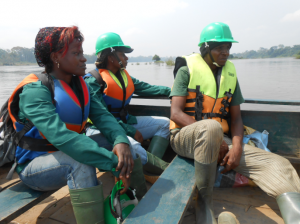
The Green Connexion team during a survey on the Sanaga River. Photo@greenconnexion. 2015.
In Cameroon, we are currently working in the domain of conservation of freshwater plants in the Sanaga, Nyong, Mbam, Ntem and Djikem rivers. We focus mainly on the protection and conservation of plants directly threatened by the construction of retention or hydroelectric dams.
In the Sanaga River, in contract with the Nachtigal hydroelectric project since 2015, we are trying to save from extinction the plants Ledermanniella sanagaensis (CR= Critically Endangered of extinction) and of the Nachtigal falls where the Nachtigal dam will be constructed, Ledermanniella thalloidea (EN= Endangered of extinction) both species belonging
We are carrying out the same work as for the Mbam in the Djikem River which flows into the Sanaga River around Mbandjock.
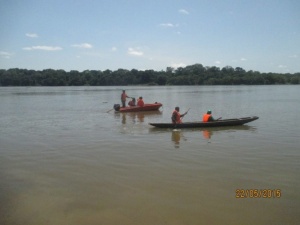
The Green Connexion team on the Nyong River waterfalls at Dipippy. Photo@greenconnexion. 2016.
The Nyong is the second largest river in Cameroon after the Sanaga. Under a sub-contract with Oréade-Brèche working for the Platinum Power company, Green Connexion in 2016 carried out in the above river a short inventory of all freshwater aquatic species and the results showed that it contains many important species from a conservation point of view because they are threatened at different levels. We can cite the following examples: Saxicollela nana (endemic to the Nyong River) and Ledermanniella boumiensis all two (VUD2), Ledermanniella schlechteri, Ledermanniella
bifurcata and Macropodiella heteromorpha, all three (VU B2ab(ii,iii)) and Impatiens letouzeyi (EN).

The Green Connexion team during a mapping mission on the Ntem River. Photo@greenconnexion. 2015
Compared to the Sanaga River currently, the Nyong River remains relatively less perturbed. For all projects on this note, the examples of the threatened plants listed above show the importance of the conservation initiatives of freshwater aquatic plants at the base.
Generally, when a big project is carried out on a big water course, even with a good will, in situ conservation actions (on the project site) are often difficult and costly. In this context, the transplantation (removing the threaten species and plant them somewhere else), the search and the conservation of new populations are often envisaged as the best alternative.
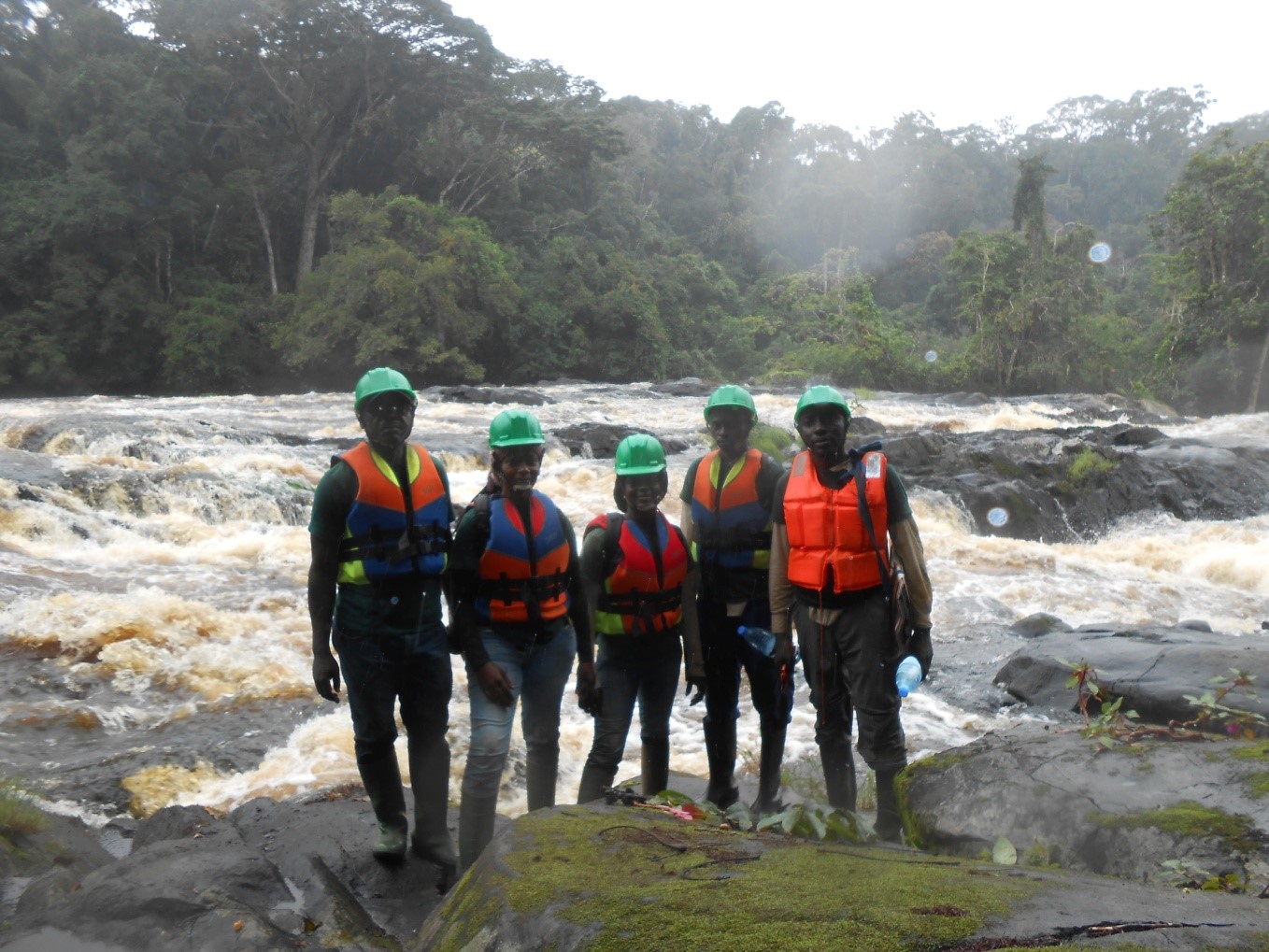
The Green Connexion team during a water sampling on the River Dibang. Photo@greenconnexion. 2014.
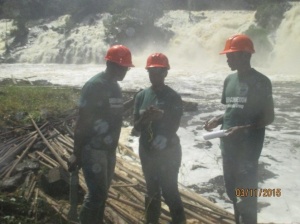
The Green Connexion team during an inventory on the River Ntem’s waterfalls. Photo@greenconnexion. 2015.
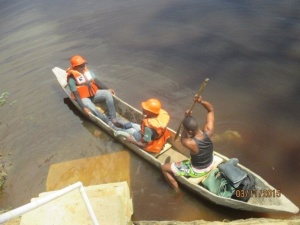
The Green Connexion team during a crossing of the Biwomé River. Photo@greenconnexion. 2015.
However, most freshwater aquatic plants are very eye-catching in terms of the physic anc chemical conditions of the milieu. To guarantee a chance of success to a possible transplantation, the conditions in the source medium should be close to, if not identical, to those in the host medium.
From 2014-2015, under the financing of the Rufford Small Grants, we studied the physico-chemical conditions of water in the Sanaga River at Nachtigal, and at Edéa, and then compared them to those of waters from the Afamba, Mbam, Kelle, Nyong, Dibang, Lep Riton and Ngwei rivers.
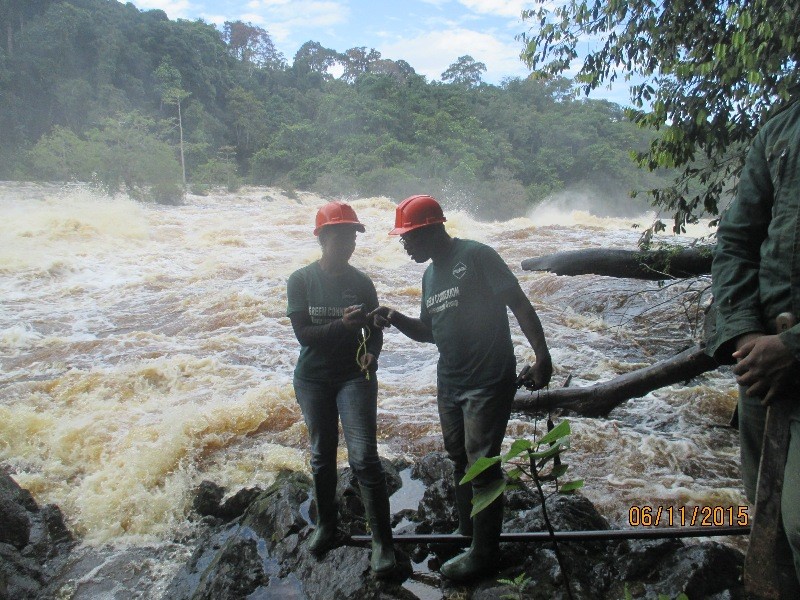
The Green Connexion team during a mapping mission on the Ntem River. Photo@greenconnexion. 2015
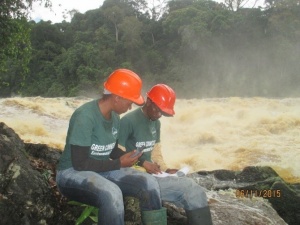
The Green Connexion team during notes taking on the Ntem’s riverside. Photo@greenconnexion. 2015.
Statistically, the physico-chemical characteristics of the Kelle and Lep Riton rivers were closer to those of the Sanaga River at Edéa and at Nachtigal.
Due to this fact, these two rivers constituted the best sites for the potential transplantation of endemic Podostemaceae from the threatened sites of Edéa and Nachtigal. However, these two rivers are not tributary to the Sanaga River. Taking into consideration the size and parental link with the Sanaga River, the Mbam river was also retained as a site for eventual transplantation.
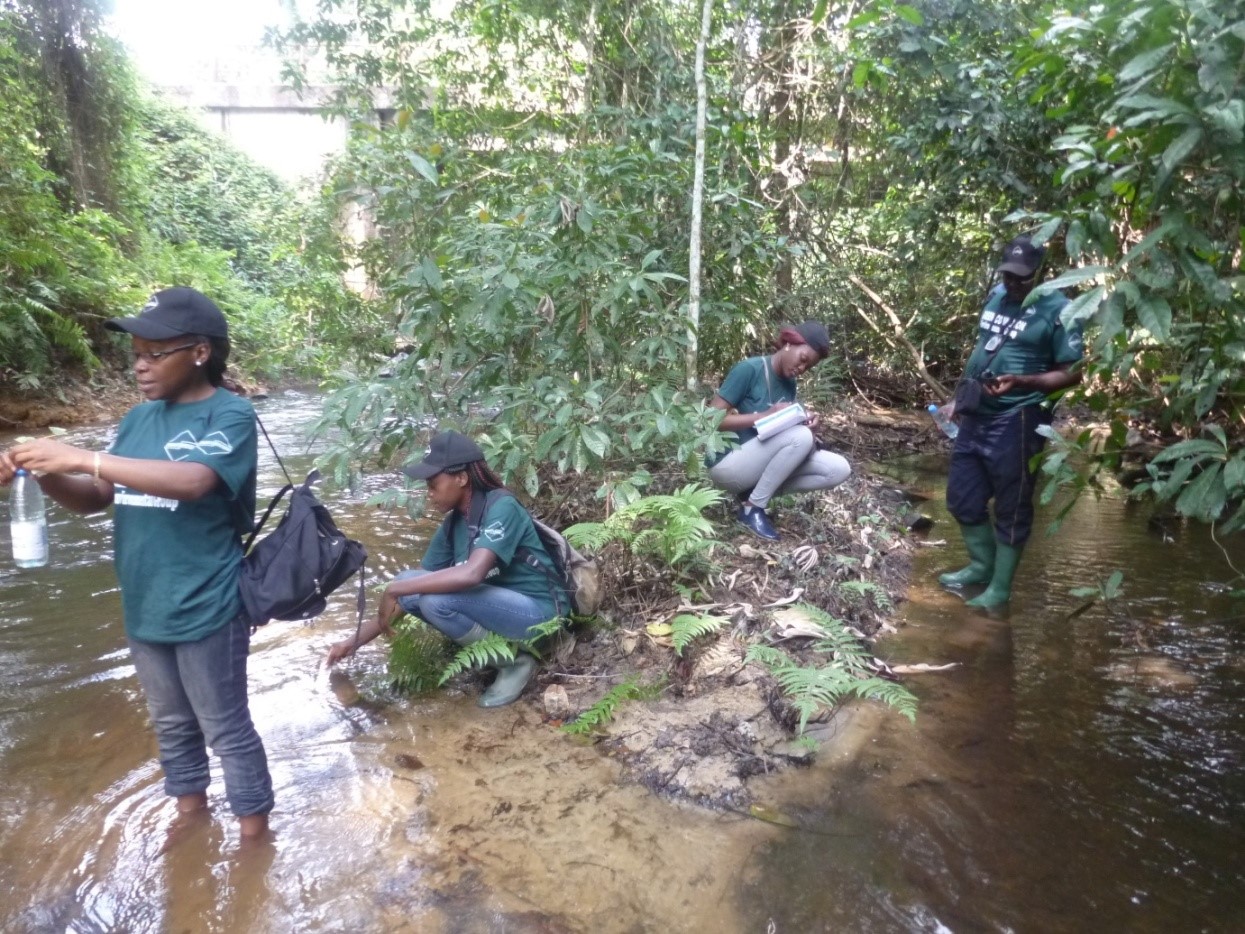
The Green Connexion team during a water sampling on the River Dibang. Photo@greenconnexion. 2014.
Cameroon has many dams. Actions to conserve freshwater aquatic plants in the watercourses where these dams are built are, if non-existent, but
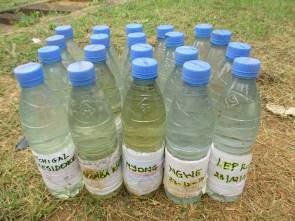
Echantillons d’eau
diverse and isolated. Yet a watercourse holds in all. When several dams are built there, their conservation actions must be concerted and coordinated. In the near future, we envisage,
together with the Cameroon Ministries of Water and Energy, Environment and Nature Protection, IUCN and all stakeholders in the field, the creation of a common platform for reflection and exchange on actions that favor the conservation of freshwater biodiversity in the major rivers of Cameroon.
About the Author